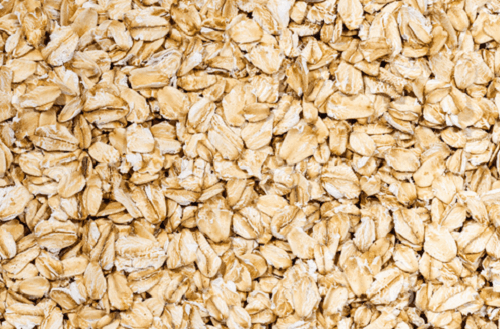10 Health Benefits of Oatmeal and a Breakfast Recipe


Reviewed and approved by the pedagogue in physical education and nutritionist Elisa Morales Lupayante
Oatmeal is one of the healthiest, most delicious whole-grain cereals out there. It’s also one of the most eaten in the entire world due to its high nutritional value and energy supply. Keep on reading to learn 10 unbelievable health benefits of oatmeal (we’ll also show you a great breakfast recipe)!
Oatmeal has more proteins, vitamins, carbohydrates, and nutrients than most other grains. Best of all, you can eat it year-round, and it’s always available at a reasonable price. Still not convinced? We’ll give you some great reasons to eat it every day below!
The health benefits of oatmeal
It helps balance cholesterol
Oatmeal contains a fiber compound called Beta-glucan that, according to studies, is very good for those who suffer from high cholesterol. Eating it during breakfast can help keep that cholesterol be where it needs to be.
It’s an antioxidant

Oatmeal also has antioxidant properties that help fight the free radicals that come from bad cholesterol. This aspect is truly important and plays a vital role in preventing cardiovascular diseases.
You might like:
It strengthens the immune system
The beta-glucan in oatmeal is also the immune system’s best weapon against viruses and infection-causing bacteria. Eating it every day can help strengthen your immune system and protect your body against these harmful pathogens.
It helps treat diabetes

This is one of the more specific health benefits of oatmeal, but it can help people with type 2 diabetes. Its soluble fiber can help people with this condition since it stimulates starch digestion and regulates blood sugar levels, especially after eating meals.
It improves digestion
The fact that oatmeal helps digestion means it also helps prevent problems like constipation. Soluble fiber also helps reduce stomach acid and bile and their toxic capacity.
It leaves you feeling full

One of the many reasons it’s good to eat oatmeal for breakfast every day is that it makes you feel full for longer. That means it can help get rid of the feeling that you need to eat all the time. It makes you feel fuller because of its complex carbohydrates, also known as slow-absorbing carbohydrates.
It’s anti-carcinogenic
Oatmeal has lignans and phytoestrogens, two essential nutrients that help prevent hormone-related cancers. This is why it’s good for women who are about at the age of menopause to eat oatmeal. It’s not 100% certain, but some studies have found that the ingredients in oatmeal help reduce the risk of breast cancer.
It helps treat asthma
Oatmeal also has a cough syrup-like effect which is especially helpful if you have a cough or bronchitis. Studies show that an increased consumption of whole-grains like oatmeal can reduce the risk of asthma in children by up to 50%.
This study paired fish with oatmeal and concluded that eating fish and oatmeal together reduces your risk of becoming asthmatic by up to 50% and your risk of narrowing bronchial respiratory passages by up to 80%.
It protects your heart

The lignans in oatmeal and other grains are phytochemicals that your body gets through digestion. These nutrients can help protect the heart from various diseases.
It’s a diuretic
Eating oatmeal helps eliminate uric acid and increases the amount of urine in your body because of its silicone content. This means that it can help fight gout and other diseases related to fluid retention.
Read more:
How can you eat oatmeal for breakfast?
Now that you’ve learned about some of the health benefits of oatmeal, you’re probably wondering how you can make it a bigger part of your diet. There are many ways you can eat oatmeal for breakfast. Today, we’re going to share a simple recipe that will enable you to take advantage of all its properties and start your day off right.
Ingredients
- 1/2 cup of whole-grain ground oatmeal
- 6 almonds
- 2 nuts
- 1 spoonful of chia seeds
- Honey or stevia
- 1 teaspoon of raisins
- A coconut or almond drink
What should you do?
- Pick a container and fill it halfway with a fair amount of oatmeal.
- Add a spoonful of chia seeds.
- Mix the ingredients and pour either the almond or coconut milk in until it is almost full, but leave room for the rest of the ingredients.
- Add the rest of the ingredients and cover it.
- Leave it in the refrigerator all night.
- The next day you can add a little more milk.
All cited sources were thoroughly reviewed by our team to ensure their quality, reliability, currency, and validity. The bibliography of this article was considered reliable and of academic or scientific accuracy.
- Chandalia, M., Garg, A., Lutjohann, D., Von Bergmann, K., Grundy, S. M., & Brinkley, L. J. (2000). Beneficial effects of high dietary fiber intake in patients with type 2 diabetes mellitus. New England Journal of Medicine, 342(19), 1392-1398. Available at: https://www.nejm.org/doi/full/10.1056/NEJM200005113421903. Accessed 06/03/2020.
- DAVIS, J. M., MURPHY, E. A., BROWN, A. S., CARMICHAEL, M. D., GHAFFAR, A., & MAYER, E. P. (2004). Effects of oat β-glucan on innate immunity and infection after exercise stress. Medicine & Science in Sports & Exercise, 36(8), 1321-1327. Available at: https://journals.lww.com/acsm-msse/Fulltext/2004/08000/Effects_of_Oat___Glucan_on_Innate_Immunity_and.9.aspx. Accessed 06/03/2020.
- EFSA Panel on Dietetic Products, Nutrition and Allergies (NDA). (2010). Scientific Opinion on the substantiation of a health claim related to oat beta glucan and lowering blood cholesterol and reduced risk of (coronary) heart disease pursuant to Article 14 of Regulation (EC) No 1924/2006. EFSA Journal, 8(12), 1885. Available at: https://doi.org/10.2903/j.efsa.2010.1885. Accessed 06/03/2020.
- Mackie, A., Rigby, N., Harvey, P., & Bajka, B. (2016). Increasing dietary oat fibre decreases the permeability of intestinal mucus. Journal of functional foods, 26, 418-427. Available at: https://doi.org/10.1016/j.jff.2016.08.018. Accessed 06/03/2020.
- MedlinePlus (2019). Antioxidantes. Available at: https://medlineplus.gov/spanish/antioxidants.html. Accessed 06/03/2020.
- Othman, R. A., Moghadasian, M. H., & Jones, P. J. (2011). Cholesterol-lowering effects of oat β-glucan. Nutrition reviews, 69(6), 299-309. Available at: https://doi.org/10.1111/j.1753-4887.2011.00401.x. Accessed 06/03/2020.
- MedlinePlus (2018). Fibra. Available at: https://medlineplus.gov/spanish/ency/article/002470.htm. Accessed 06/03/2020.
- Peterson, D. M. (2001). Oat antioxidants. Journal of cereal science, 33(2), 115-129. Available at: https://doi.org/10.1006/jcrs.2000.0349. Accessed 06/03/2020.
- Rebello, C. J., O’Neil, C. E., & Greenway, F. L. (2016). Dietary fiber and satiety: the effects of oats on satiety. Nutrition Reviews, 74(2), 131-147. Available at: https://doi.org/10.1093/nutrit/nuv063. Accessed 06/03/2020.
- Singh, R., De, S., & Belkheir, A. (2013). Avena sativa (Oat), a potential neutraceutical and therapeutic agent: an overview. Critical reviews in food science and nutrition, 53(2), 126-144. Available at: https://doi.org/10.1080/10408398.2010.526725. Accessed 06/03/2020.
- Virtanen, S. M., Kaila, M., Pekkanen, J., Kenward, M. G., Uusitalo, U., Pietinen, P., … & Veijola, R. (2010). Early introduction of oats associated with decreased risk of persistent asthma and early introduction of fish with decreased risk of allergic rhinitis. British journal of nutrition, 103(2), 266-273. Available at: https://doi.org/10.1017/S0007114509991541. Accessed 06/03/2020.
- Zhang, X., McGeoch, S. C., Megson, I. L., MacRury, S. M., Johnstone, A. M., Abraham, P., … & Lobley, G. E. (2014). Oat‐enriched diet reduces inflammatory status assessed by circulating cell‐derived microparticle concentrations in type 2 diabetes. Molecular nutrition & food research, 58(6), 1322-1332. Available at: https://doi.org/10.1002/mnfr.201300820. Accessed 06/03/2020.
This text is provided for informational purposes only and does not replace consultation with a professional. If in doubt, consult your specialist.








